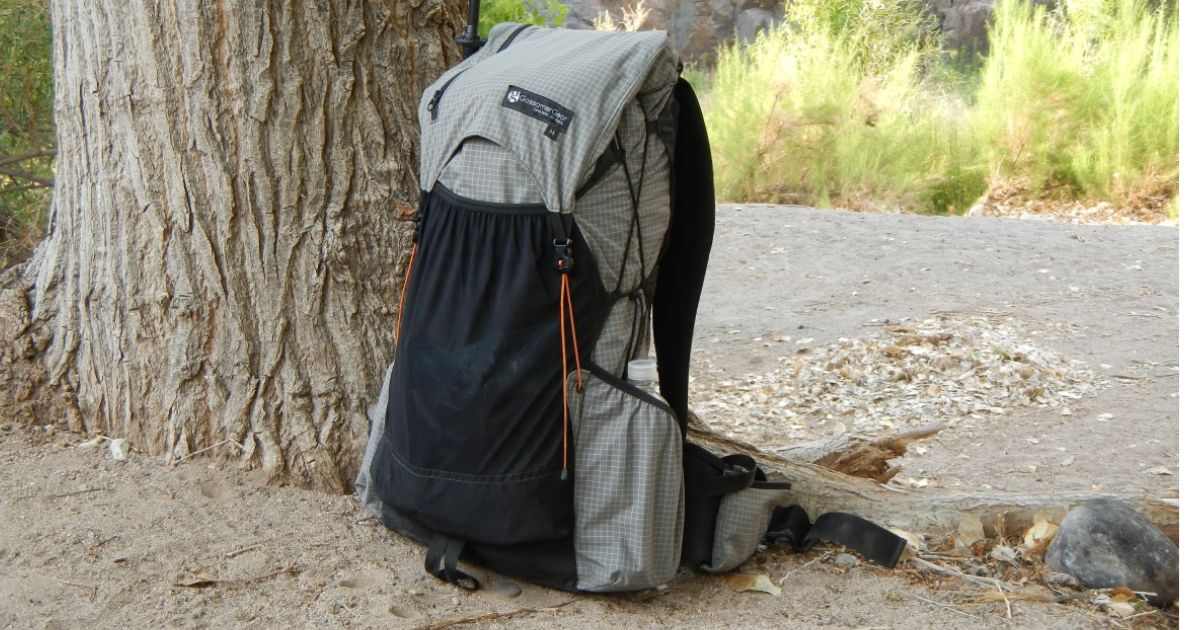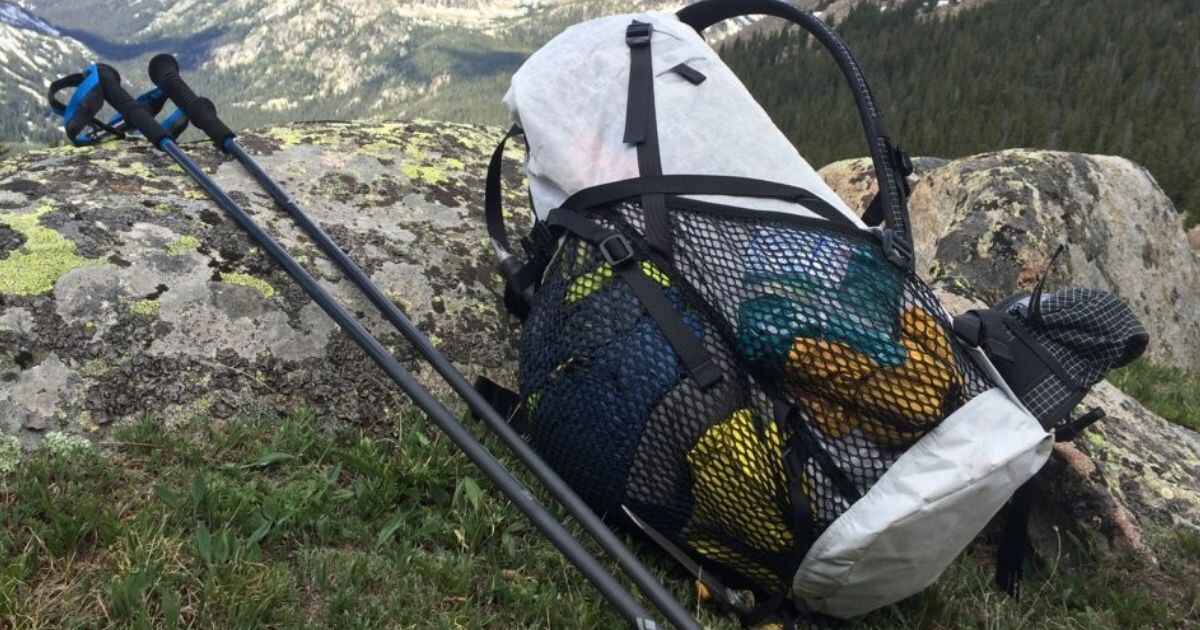Have you ever dreamed of carrying your entire life on your back, trekking through breathtaking wilderness for months on end? Welcome to the world of thru-hiking, where choosing the right backpack can make or break your adventure. As someone who’s hiked thousands of miles on America’s long trails, I’m here to share my hard-earned wisdom about the best backpacks for thru-hiking.
When you’re out on the trail for weeks or months, your backpack becomes your closest companion. It’s not just a piece of hiking gear; it’s your mobile home, carrying everything you need to survive and thrive in the wilderness. That’s why picking the perfect pack is crucial for a successful and enjoyable thru-hike. In this article, I’ll guide you through the ins and outs of selecting the ideal thru-hiking pack, drawing from my personal experiences and those of my fellow long-distance hikers.
Why I’m Not Talking About Packs From The “Big Name” Brands You’ll Find in Outdoor Stores
When you walk into a typical outdoor store, you’re bombarded with backpacks from well-known brands. These packs might look impressive, with their array of pockets and features, but they’re often not the best choice for thru-hiking. The reason? They’re designed for a different type of outdoor experience weekend trips or short backpacking excursions, not months-long journeys covering thousands of miles.
Most thru-hikers quickly learn that what works for a casual weekend in the woods doesn’t cut it on a long-distance trail. The needs of someone hiking for five months straight are vastly different from those of a weekend warrior. That’s why I’ve learned to look beyond the big names and focus on gear specifically designed for the unique challenges of thru-hiking.
Too Heavy
One of the biggest issues with mainstream backpacks is their weight. When you’re covering 20+ miles a day for months on end, every ounce matters. Mainstream packs often tip the scales at 4-5 pounds or more, which might not seem like much until you’ve been carrying it for 12 hours a day, day after day. That extra weight can lead to fatigue, injuries, and a less enjoyable hiking experience.
Light Ones Are Badly Designed
Some big brands do offer lightweight options, but in my experience, these often fall short in terms of design and functionality for thru-hiking. They might sacrifice durability, comfort, or carrying capacity in the quest to reduce weight. On a long trail, you need a pack that can withstand months of hard use, carry a week’s worth of food when necessary, and still feel comfortable after thousands of miles.
Why I’m Not Talking About Frameless, Hip-Belt Less Backpacks For Thru-Hiking
At the other end of the spectrum from heavy mainstream packs, you’ll find ultralight backpacks that do away with frames and hip belts. While these packs can work for some highly experienced ultralight hikers, they’re not the best choice for most thru-hikers. The lack of support can lead to discomfort and even injury when carrying heavier loads, which is sometimes necessary on long trails.
Frameless packs also tend to have less structure, which can make packing and organizing your gear more challenging. When you’re living out of your backpack for months, being able to easily access and organize your gear becomes crucial. A well-designed frame and hip belt can make a world of difference in comfort and convenience over the long haul.
OR
That said, there are scenarios where frameless, hip-belt-less packs might work for thru-hiking. If you’ve got your base weight (the weight of your gear excluding food and water) down to around 10 pounds or less, and you’re hiking a trail with frequent resupply points, a ultralight pack could be a viable option. But for most hikers, especially those new to long-distance trails, a lightweight pack with a frame and hip belt offers the best balance of comfort and functionality.
I’m Only Talking About Packs That I Have Either Personally Used or That Hiking Partners Have Successfully Used for 1000’s of Miles
When it comes to thru-hiking gear, there’s no substitute for real-world experience. That’s why in this article, I’m focusing solely on packs that have proven themselves over thousands of miles on long trails. These are packs that I’ve either used personally or that my trusted hiking partners have put through their paces on grueling thru-hikes.
This approach ensures that the recommendations I’m making aren’t just based on specs or short-term testing, but on how these packs perform in the challenging conditions of a real thru-hike. From scorching deserts to drenching rain, from rocky mountain passes to muddy forest trails, these packs have seen it all and come out on top.
Thru Hiking Backpack Size – AKA Carrying Capacity

When it comes to thru-hiking packs, size matters but bigger isn’t always better. The ideal pack size for thru-hiking typically falls in the range of 45-60 liters. This capacity allows you to carry all your essential gear, plus enough food to get you between resupply points, without encouraging you to overpack.
Remember, on a thru-hike, you’re not just carrying your base gear. You need room for food (sometimes up to a week’s worth), water (which can be heavy in dry sections), and occasionally extra gear for challenging weather conditions. A pack in the 45-60 liter range gives you this flexibility without being excessively large.
Materials
The materials used in thru-hiking backpacks play a crucial role in their performance and durability. The most common materials you’ll encounter are various types of nylon, including Dyneema Composite Fabric (DCF, formerly known as Cuben Fiber). Each material has its pros and cons, balancing factors like weight, durability, and water resistance.
Nylon, particularly in high-denier ripstop varieties, offers excellent durability and abrasion resistance. It’s also relatively affordable. DCF, on the other hand, is incredibly lightweight and naturally waterproof, but it comes at a higher price point and can be less durable in terms of abrasion resistance. Some packs use a combination of materials to leverage the strengths of each.
Durability
When you’re relying on your pack day in and day out for months on end, durability becomes paramount. A pack failure in the middle of a long trail can be more than just an inconvenience; it can potentially end your hike. That’s why it’s crucial to choose a pack that can stand up to the rigors of thru-hiking.
Look for reinforced stress points, quality stitching, and materials known for their durability. Keep in mind that ultralight doesn’t always mean fragile; many modern materials offer excellent durability at a low weight. However, be prepared to make some trade-offs. A pack that can withstand thousands of miles of use might weigh a bit more than the absolute lightest option on the market.
Also Read This Blog:
Features to Look For
When selecting a thru-hiking pack, certain features can greatly enhance your hiking experience. Look for easily accessible water bottle pockets you’ll be reaching for your water frequently, and being able to grab it without taking off your pack is a game-changer. A large mesh pocket on the back of the pack is great for storing wet gear or items you need quick access to.
Comfortable, well-padded shoulder straps and a supportive hip belt are crucial for long days on the trail. Some hikers prefer hip belt pockets for storing snacks or a phone. A top lid with pockets can be useful, but some ultralight packs opt for a simpler roll-top closure to save weight. Consider what features matter most to you based on your hiking style and preferences.
Sizing
Proper sizing is crucial for comfort and injury prevention when it comes to thru-hiking packs. A pack that’s too long or short for your torso can lead to chafing, back pain, and an unstable load. Most pack manufacturers offer their models in multiple sizes, and many have adjustable suspension systems to fine-tune the fit.
To find your correct size, measure your torso length from the C7 vertebra (the bony bump at the base of your neck) to the top of your hip bones. This measurement will help you select the right pack size. Don’t forget to consider the hip belt size as well a properly fitting hip belt should wrap around your hips, not your waist.
Weight of the Backpack
The weight of your pack is a critical factor in your overall thru-hiking experience. Remember, you’ll be carrying this pack for thousands of miles, so every ounce counts. However, don’t get so focused on weight that you sacrifice necessary features or durability. A good rule of thumb is to aim for a pack weight of 2-3 pounds for most thru-hikers.
Keep in mind that the lightest pack isn’t always the best choice. If shaving a few ounces means you’ll be uncomfortable or that your pack might not last the entire trail, it’s not worth it. The goal is to find a balance between weight, comfort, and durability that works for you and your hiking style.
The Best Backpacks For Thru-Hiking
After thousands of miles on the trail and countless conversations with fellow thru-hikers, I’ve narrowed down the field to three top contenders for the best thru-hiking backpacks. These packs have proven themselves time and time again on long trails across America. They offer the right balance of weight, durability, comfort, and features that make them ideal for the unique demands of thru-hiking.
Each of these packs has its own strengths, and the best choice for you will depend on your specific needs and preferences. Let’s dive into the details of each to help you make an informed decision for your next long-distance adventure.
Gossamer Gear Gorilla

The Gossamer Gear Gorilla is a favorite among thru-hikers for good reason. This 40-liter pack weighs in at just 30.5 ounces (865g) for a medium size with a hip belt, making it one of the lighter options in its class. Despite its lightweight, the Gorilla doesn’t skimp on features or comfort.
One of the standout features of the Gorilla is its removable aluminum stay and foam back panel. This allows you to customize the pack’s support based on your load and preferences. The foam back panel doubles as a sit pad, providing a bit of luxury during breaks. The pack’s large mesh pocket and roomy hip belt pockets offer plenty of easily accessible storage.
ULA Ohm 2.0
The ULA Ohm 2.0 is a workhorse of a pack that has seen countless miles on America’s long trails. With a capacity of 63 liters (though it carries more like 50), the Ohm 2.0 offers plenty of space for gear and food without feeling overly large. At 30 ounces (851g) for a medium size, it strikes a nice balance between weight and features.
What sets the Ohm 2.0 apart is its durability and load-carrying comfort. The pack uses a combination of 210 Robic nylon and 400 Robic nylon in high-wear areas, providing excellent abrasion resistance. The contoured shoulder straps and substantial hip belt make it comfortable even when fully loaded. Large side pockets easily accommodate water bottles or even a tent.
Hyperlite Mountain Gear Windrider 3400

The Hyperlite Mountain Gear Windrider 3400 is a favorite among hikers who prioritize lightweight gear and water resistance. Made from Dyneema Composite Fabric, this 55-liter pack is naturally waterproof and incredibly light, weighing just 31.82 ounces (902g) for a medium size in the white fabric option.
The Windrider’s standout feature is its excellent weatherproofing. The roll-top closure and waterproof fabric mean your gear stays dry even in heavy rain. The pack’s large mesh front pocket and side pockets offer easy access to frequently used items. While it comes at a higher price point than some other options, many hikers find the durability and performance worth the investment.
Conclusion
Choosing the right backpack is one of the most important decisions you’ll make when preparing for a thru-hike. The perfect pack can make your journey more comfortable and enjoyable, while the wrong one can lead to discomfort, frustration, and even injury. By focusing on key factors like weight, durability, comfort, and carrying capacity, you can find a pack that will serve you well for thousands of miles.
What works for one hiker might not be ideal for another. Consider your own needs, preferences, and hiking style when making your choice. Don’t be afraid to try on multiple packs and even load them up with your gear to see how they feel. With the right pack on your back, you’ll be well-equipped to tackle the challenges and enjoy the incredible experiences that thru-hiking has to offer. Happy trails!

I am a content writer with three years of experience in delivering informational content. My personal blog, “crunchshub.com,” covers a variety of general topics from around the world.